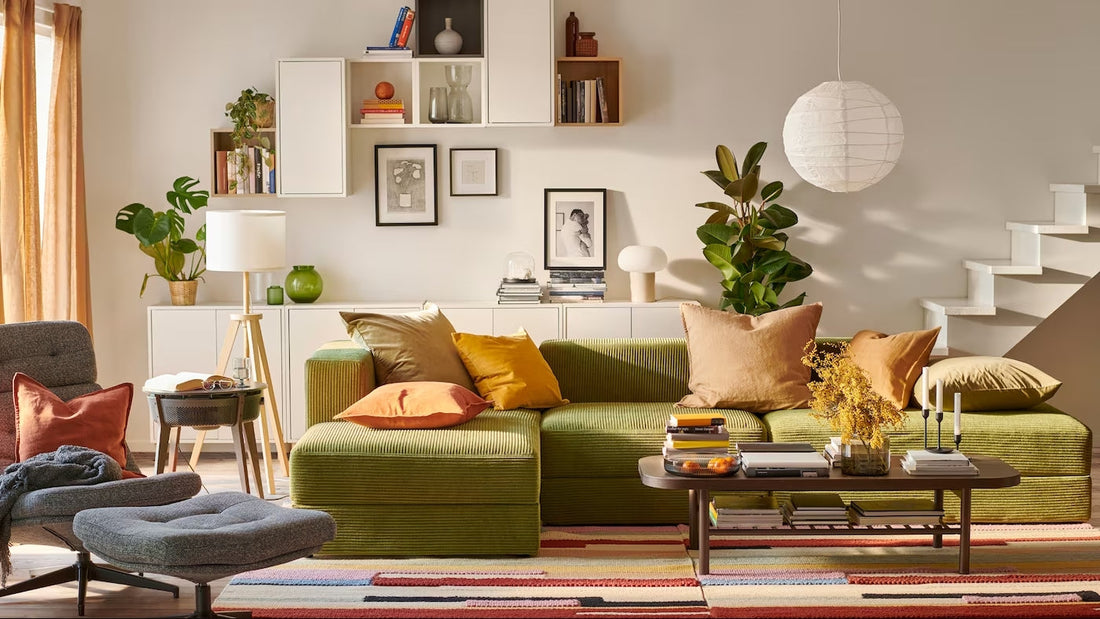
Vintage vs. Modern Lamps: Finding Your Style
Lighting is more than a functional necessity—it’s an extension of your personality and a reflection of your home’s soul. Whether you’re drawn to the nostalgic charm of vintage lamps or the sleek innovation of modern designs, understanding the strengths and nuances of each style can help you craft a space that feels both authentic and inviting. Here’s how to navigate the timeless debate between vintage and modern lamps, with practical tips to align your choices with your lifestyle and décor.
1. Defining Vintage and Modern Lamps
Vintage Lamps: Timeless Character
Vintage lamps (typically pre-1980s) evoke history and craftsmanship. They often feature:
Materials: Brass, bronze, wrought iron, or hand-blown glass, with finishes like aged copper or patina for an antique feel.
Design Motifs: Ornate details like floral carvings, exposed bulbs (e.g., Edison-style), and motifs inspired by historical eras (e.g., Art Deco curves or Victorian filigree).
Ambiance: Warm, diffused light (2700–3000K) that creates a cozy, nostalgic atmosphere, ideal for living rooms or reading nooks.
Example: A Belgian 1960s two-arm bronze sconce with handcrafted detailing, pairing E14 bulbs for soft, ambient lighting.
Modern Lamps: Minimalist Innovation
Modern designs prioritize clean lines and technology:
Materials: Sleek metals (aluminum, stainless steel), glass, and plastics, often in monochromatic tones (black, white, or metallic).
Features: Smart controls (voice/dimmaable), energy-efficient LEDs, and geometric shapes (e.g., Honeywell’s 10400LM floor lamp with 4000K natural daylight and glare-free design)9.
Ambiance: Adjustable color temperatures (3000–5000K) for versatility, from warm relaxation to focused task lighting.
2. Key Considerations for Choosing Your Style
A. Interior Design Harmony
Vintage Suits:
Traditional, farmhouse, or eclectic spaces.
Rooms with rich textures (wood, velvet) or antique furniture.
Modern Complements:
Minimalist, industrial, or Scandinavian interiors.
Open-plan spaces needing functional zoning (e.g., smart pendants over kitchen islands).
Tip: Mix styles strategically—pair a mid-century modern arc lamp with a vintage Persian rug for balanced contrast.
B. Functionality vs. Aesthetics
Vintage Strengths:
Unique, one-of-a-kind pieces that add storytelling value.
Ideal for low-traffic areas (e.g., bedside tables, entryways).
Modern Advantages:
Energy efficiency (e.g., LEDs with 30,000-hour lifespans).
Customizable settings (dimming, color changes) for multifunctional spaces.
C. Maintenance and Sustainability
Vintage Challenges:
Older wiring may need upgrading for safety.
Limited compatibility with smart systems.
Modern Solutions:
Low-maintenance materials (e.g., rust-proof aluminum).
Eco-friendly designs (recyclable components, solar-powered options).
3. How to Blend Both Styles
Anchor with a Statement Piece: Use a vintage chandelier as a dining room centerpiece, complemented by recessed modern LEDs for task lighting
Layer Lighting: Combine a minimalist floor lamp (4000K) for reading with vintage table lamps (2700K) for ambient warmth
Repurpose Vintage Finds: Convert an antique lantern into a pendant light using LED bulbs for a fusion of old and new
4. Top Picks for Each Style
| Vintage Lamps | Modern Lamps |
|---|---|
| Belgian bronze wall sconces (1960s) | Honeywell LED floor lamp (10400LM, 4000K) |
| Edison-bulb industrial pendants | Nanoleaf modular smart panels |
| Hand-painted Chinese ceramic lamps | Philips Hue smart bulbs (16M colors) |
5. Avoiding Common Mistakes
Overcrowding: Too many ornate vintage lamps can overwhelm small spaces; balance with neutral modern fixtures
Ignoring Scale: A massive chandelier in a low-ceiling room feels oppressive—opt for semi-flush mounts instead.
Neglecting Light Quality: Prioritize high CRI (≥90) in modern lamps for accurate color rendering, especially in kitchens and offices.
Conclusion: Let Your Space Tell Its Story
Your choice between vintage and modern lamps isn’t about trends—it’s about what resonates with your life. Vintage pieces whisper history and craftsmanship, while modern designs shout innovation and efficiency. By blending both thoughtfully, you create a home that’s both functional and deeply personal.
Final Tip: Start with a single focal lamp (e.g., a vintage brass desk light or a smart pendant), then build your lighting layers around it. Remember, the best spaces balance nostalgia and progress, much like light itself—ever-evolving, yet timeless.
Explore Further:
How to Choose Suitable Indoor Decorative Lamps for Children: Safety, Style, and Functionality
